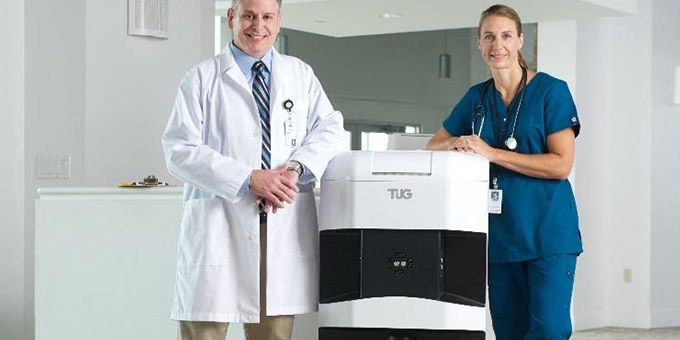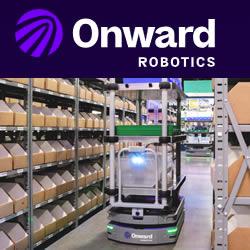There are three adaptations we are watching closely at Aethon since we believe they are a trend and may become more permanent. These adaptations will have a significant influence specifically on the use of automation and autonomous mobile robotics.
 Mobile Robotics and Market Adaptations after COVID-19
Mobile Robotics and Market Adaptations after COVID-19

Tony Melanson – VP Marketing at ST Engineering | Aethon
There are two distinct segments of our workforce during the COVID-19 crisis: those who are deemed ‘essential’ and most of the rest of us. We celebrate the essential workers who keep our cars running, help us get food on the table, and keep our family and friends both safe and healthy. The rest of us are hunkered down and it can be a little tough to keep perspective. It feels like we are experiencing a form of time dilation. But if we look at what’s happening across our businesses, we see so many changes and adaptations across both essential and non-essential businesses. Some are hopefully temporary (like closing establishments). But it seems as though some of these adaptations will be more permanent than others since they have long-term benefits to the organization and the people or customers it serves.
There are three adaptations we are watching closely at Aethon since we believe they are a trend and may become more permanent. These adaptations will have a significant influence specifically on the use of automation and autonomous mobile robotics.
Adaptation #1 - Ability to operate with an overloaded or reduced staff
The current crisis is forcing overloaded organizations to evaluate and implement new ways of working.
In hospitals around the world, it’s all hands and feet on deck. The healthcare worker is on the front line of the current outbreak and needs every resource available to support them. While coronavirus or COVID-19 is dominating the headlines for the strain it’s placing on healthcare, the hospitals also must continue to manage their typical patient population. Providing for the entire hospital is necessary since it’s a complete and contained system running almost as its own indoor city. Inside of this city are all the supplies needed to care for and comfort patients: medications, meals, linens, lab specimens and even trash removal. All of this has to be moved, transported and delivered. Since the first week of February, specific Aethon customers located in hot spots around the country increased their robot utilization by over 30% compared to their weekly average through 2019. The relief from the load of COVID-19 patients is welcome on an hour-to-hour and day-to-day basis but becomes more pronounced as the demands on physical labor increase in duration and intensity. Removing that burden from the staff and assigning it to a mobile robot not only improves staff utilization but relieves the overworked healthcare team. Even when COVID-19 is just a memory, there will likely be new spikes in demand for any number of reasons.
.jpg)
Retail environments are crushed with supply and demand imbalances and their teams are struggling to keep pace with the inflow of materials along with the stocking of shelves and cleaning. Robots which provide material movement from the loading dock to the stocking areas and robots to assist with the new flow of online shopping and local pickup improves staff efficiency and makes the most of existing staff. It also relieves the staff from the draining task of moving both full and empty carts from the warehouse to the retail area and vice versa.
Hotels haven’t yet had to operationalize their new staffing levels or change the workflow since, unfortunately, many are still closed at the time of this article. Revenues are 75% below normal levels and there are tremendous impacts. When they open there will be new demands and requirements to which they must adapt. For example, we can predict that cleanliness of rooms will be a major factor in a guest’s confidence to stay at a particular hotel brand. Yet, the enhanced cleaning protocols required will be an added burden on housekeeping staff. Mobile robots can assist by removing the spent room materials and keep the housekeeping staff stocked with fresh materials to ease the work burden and improve their efficiency. In general, hotels will be under tremendous financial pressure to consolidate and streamline operations which often means staffing changes – pointing to further automation solutions.
(3).jpg)
Adaptation #2 - Serve customers while maintaining social distance
Even if you can hire enough staff to complete all the jobs that need doing, keeping your staff and customers healthy and safe will require changes.
There will be new awareness of pathogens in our workplace and communities. We are seeing businesses which have high levels of public-to-staff interactions put mitigations in place to reduce the potential for transmission. Clearly, COVID-19 has ushered in adaptations that might be temporary but others are likely to persist since they apply to any number of human-to-human transmitted illness – and this isn’t fearmongering. Workdays lost due to sickness has always been a big challenge. In one study of 5 Japanese companies published in the Journal of Occupational and Environmental Medicine employees lost an average of nearly 18 days per year due to sickness leave and sickness presence combined. Just considering the flu, a 2017 study published in the same journal concluded the days lost impact of a flu episode per person is between 3.5 and 5 days.
In hospitals, mobile robots allow greater social distancing since they perform transportation tasks throughout the hospital while people stay in their respective work areas. This is particularly useful in an environment where there is known illness. The robot doesn’t sneeze in the elevator or touch a door handle when making a delivery. They don’t breathe or touch anything. The robot cannot become infected and asymptomatic for days on end transmitting COVID-19 or the flu to others. It can move through quarantine areas without concern and be cleaned and ready for use without risk to personal safety.
.jpg)
In hotels, it’s much of the same. Staff will remain concentrated in their departments or work zones while a mobile robot performs transportation through the facility and automates the handoffs to the staff or guests. The less interaction among people, the less chance there is to contract illness. Transactional interactions will likely become more automated so we can preserve the more valuable interpersonal interaction of hospitality. But, the very phrase “high touch service” in hotels may have already lost some of its appeal even before hotels re-open.
.jpg)
In retail environments, we have seen customers change their shopping behavior and this has ushered in all sorts of new checkout, pickup and delivery schemes. Previously, all of this material movement was done for free…by customers pushing shopping carts. But now, people need to keep their distance and so the specific movement of a consumer’s grocery list has to be done at the cost of the grocer. Consumers can only hope to score a pickup slot for their local store so they can place a grocery order online and avoid the store altogether. But, those pickup slots go quickly, don’t they?
Adaptation #3 -Provide high service levels with the reduced and overworked staff and the need to maintain social distance.
Efficiency demands and social distancing requirements have become mutually reinforcing and will create new opportunities and expectations of service.
The nature of high-quality service will be redefined because customer behaviors and needs will have permanently changed.
In retail, some of these service options existed before COVID-19 (like curbside pickup) but most consumers never bothered to make the behavior change to use them. But now, it seems as though online ordering with in-store or curbside grocery pickup is going to be a big thing and automation is making a strong case for itself. The definition of quality service won’t necessarily be neatly stocked shelves, carefully orchestrated shopping paths or captivating displays but rather the availability of the online service and the consistent fulfillment of your specifically ordered items on time. Some companies are now implementing a dark store strategy to address both the social distancing efforts and cope with demand, but in the end consumers will likely want this service as a rule rather than an exception. Investments will be prioritized to meet those needs (perhaps rather than the in-store experience) and therein lies the opportunity for automation everywhere in this new scenario, including mobile robots to move grocery items and finished orders.
In hospitality, high-touch service has been the standard by which hospitality brands are measured. Will that still be the case when increased desire for social distancing and increased staffing pressure are in play? Hotels will have to adapt and find new ways to create an experience that customer truly values. We have already seen hotels eliminate in-hotel dining options to improve their overall use of capital. This has been replaced by as many options as the city can deliver via on-demand couriers. Once hotels re-open, this is going to accelerate. In fact, even in hotels where there are restaurants, those restaurants may never open again. But, neither hotel management nor the guest will want excessive outside contact with delivery personnel nor will hotels or guests want the hotel staff to make the delivery. Again, a perfect use for mobile robots in a hospitality environment and one that hotel brands are poised to consider.
In healthcare, everything a hospital does is ultimately directed toward contact with patients. We need to preserve the healthcare team to maximize the value and safety of that contact. Mobile automation can meet a multitude of logistical challenges with supply delivery. In doing so, we prevent the unintentional spread of infection, keep the supporting medical staff focused in their support areas (like the pharmacy and laboratory) and allow the caregivers to do the things that they do so well.
Robots have always been typecast as “job stealers” and “dehumanizers” but it seems that robots will be recast in a more positive light in this unfolding human and economic drama. The toll COVID-19 is taking on US jobs is historic. As of May 14 there have been 36M jobless claims in the US. The entire workforce of Italy is about 26M people. Business adaptations are needed in this crisis and robots are part of that adaptation so business remain profitable and viable. Robots might be necessary so the business can operate at all. If businesses shut down and eventually fail, the impact on those jobs is negative 100%. But, if businesses adapt and some of that adaptation is through automation, they will survive (and even thrive). The net benefit to employment in this scenario compared to the alternative is very positive - even if a small number of the previously held jobs are replaced by automation in the short term. Further, robots allow employees to add their unique value. We know there is no substitute for the human element of care and many types of service.
It might just be that robots help us preserve jobs and become the best version of ourselves after all.
The content & opinions in this article are the author’s and do not necessarily represent the views of RoboticsTomorrow
Featured Product

